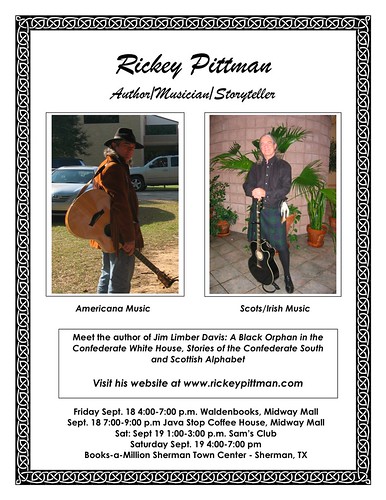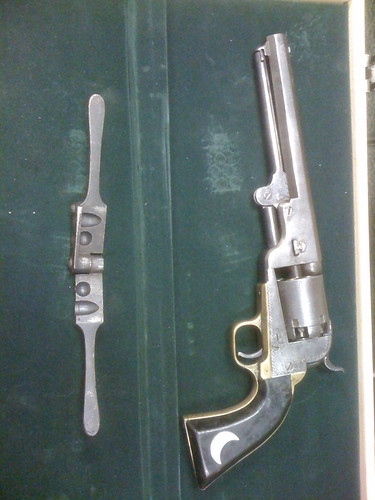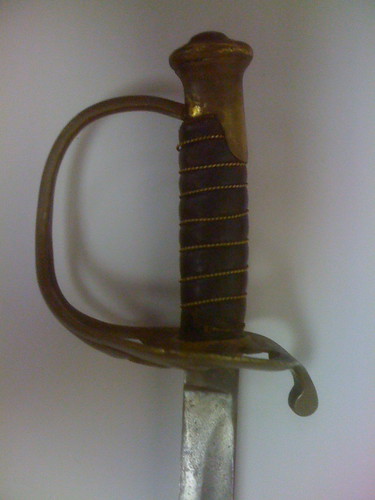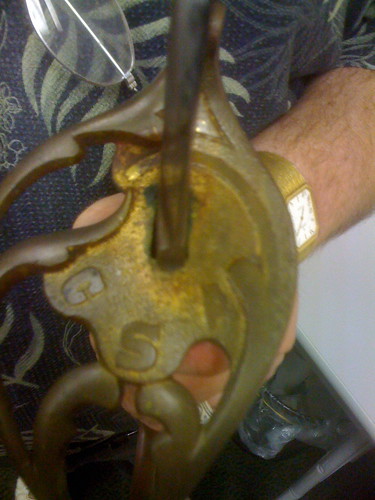When Lisa Stock agreed to be interviewed for my blog, A Southern Missive, I was ecstatic, and I have to say that she provided a superior in-depth interview. This talented and beautiful lady is a filmmaker, writer and actress working in the mythic arts. She pulls her stories from a varied background of theater, film, and anthropology. She is the author of the novella The Sun, and the online Victorian allegory Through the Cobweb Forest with artist Connie Toebe. Her films include: The Medisaga Trilogy, The Silent Nick and Nora, and Brother and Sister. When not writing or making films she loves to bake and dance flamenco. She lives online at http://www.inbytheeye.com/ and lives offline in New York City. Here are my questions and her responses.
1) When in your life did you know you would be a filmmaker?
I was about four! Watching the Wizard of Oz every year on television captured my imagination. And I remember asking once when I was very young, what it was – this colorful, musical, frightening tale come to life in a little box in my living room? My dad told me it was a movie – that they made them in Hollywood and I could do that too. I never looked backed.
So, your love of film has been lifelong?
Pretty much. Especially the fantasy and mythic films. Anything Jim Henson did, I wanted to be a part of. I love the scope, the movement, and being visually swept away.
2) Your site describes you as a filmmaker in the mythic arts. Describe what is meant by “mythic arts.”
All of my work is heavily influenced by fairy tales and mythology. Not only that I use the characters from these famous tales – but also the themes. Take for instance, the classic Hero’s journey of “separation, initiation and return” – in The Medisaga Trilogy I’ve given that journey to a heroine, Titania, and it will take her through many of the archetypes and lessons that the great classic heroes of mythology went through, such as a trip to the Underworld, a rebirth, and healing.
3) You have several films to your credit. Tell me a little about the films you’ve completed and are working on now.
1. TITANIA – Part 1 of The Medisaga Trilogy, a tale of healing and forgiveness. The trilogy is a retelling of the fairy tale of the Armless Maiden through Shakespeare’s timeless queen, as well as other characters from Midsummer and Greek mythology. This is my first feature. Although we’ve shot one scene already, the film is technically in pre-production. We’ll be shooting again this Fall with production going through next year. There are several Titania videos to view on the official site at: http://www.titaniafilm.com/
2. Brother & Sister – A tale of transformation. This is a short film adaptation of both the traditional fairy tale and Terri Windling’s poem of the same name. This film will be posted to the internet by end of July. Trailer is available to view on the website at: http://www.inbytheeye.com/BrotherandSister.html
3. The Silent Nick and Nora – A short film noir set in a magic realist world that reimagines detectives Nick and Nora Charles (The Thin Man) in a city of tattoos, compulsions and crimes of the heart. We’re hoping this film will air on cable in the NY area soon, and will be posted to the internet probably by year’s end. Both trailers are available to view on the official website at: http://www.silentnickandnora.com/
4. The Sunflower and the Sun God – The myth of Clytie and Apollo told in a mixed media short film. Entire film available to view on IMDB at: http://www.imdb.com/title/tt1366957/
4) What advice would you give those thinking of making films? Is there a certain progression/order of steps to follow?
I think of myself as a storyteller first with film being my medium of choice. I’m a visual storyteller. I would ask anyone who is thinking of making a film – Why choose film? Is it the only way to tell your story, is the best way to tell your story, is it the way in your heart to tell your story? If they say yes – then wonderful! Stay true to yourself – you’ll find your audience. That’s one of the best things about the internet – those who share your love of a particular genre, style, or story can find you even if they’re halfway around the world.
What jobs have you had in the film business that helped you gain skills or understand your craft? Is there a book you’d recommend?
I graduated from the Hunter College (CUNY) film program at a time when we were still cutting and splicing film negative (ha!). But I’ve had an education in the digital age through working in an editing dept at an events company, and on the edit system I have on my computer at home. A lot of it has been trial and error. But I’d really recommend an internship, or a P.A. job for those just starting out – you learn so much outside the classroom and on an actual set. Go make a movie!
Rather than a book to recommend, I would tell those interested to watch the behind the scenes features on their dvds. I shoot everything outdoors. I love to shoot in nature! Three behind the scenes features that have taught me a lot are from: a Brazilian film called The House of Sand, a Russian film called Russian Ark, and any of the commentaries on Peter Jackson’s Lord of the Rings trilogy. Filmmaking is a team effort – truly. You must be able to work with other people. If you’re outdoors in 25 degree January weather with three script pages to shoot before you lose your light at 4pm, you’ve got to be able to work together to get it done!
5) Where can my readers find some reviews of your films?
Faezine – http://faezine.com – The Titania Journals
Dantes Heart Journal of Myth – http://dantesheart.blogspot.com/2008/12/titania-first-scene.html
My work will also be featured in the Fall ‘09 issue of Faerie Magazine. Do check out the website press page for more articles coming out later in the year!
6) What schools would you recommend for filmmakers? What regular college classes are good for those interested in filmmaking?
Other than the practical courses in filmmaking – I really loved my film history and theory classes. These gave me a whole new perspective on story telling through film, and what you can accomplish narratively and visually with film. It’s a relatively young art form when placed next to, say, theater. The earliest filmmakers grabbed a hold of this medium and experimented in so many ways. I think that spirit is wonderful and contagious and probably why film has advanced so far in just a little over a hundred years, and who knows where it will go in the next hundred…
7) Tell me about your creative process?
I never know where my inspiration will come from, but once it does, I dive into the deep end. I have a tendency to work “backward” from most filmmakers. I will bring my cast on very early and cater rewrites to them. (My cast for The Medisaga Trilogy has been with me since 2006.) Scenes will play out in my head, I’ll scribble down lines of dialogue, and collect images that inspire me. I put them all in a folder, do a lot of brainstorming, carry it around in my head and heart for a year or so and then one weekend I’ll sit down at the computer and it will all come spilling out of me into a script. That script will, without doubt , go through several revisions – but I don’t count my drafts like some writers do. Sometimes I’ll just change one line, sometimes I’ll change 20 pages, or cut a character out entirely. When it’s done, I’ll know. But things will also change during rehearsals, shooting, and editing. A film has many “lives.”
For me, actors and crew are also storytellers. As a director, I know exactly what I want – but I like to give cast/crew room to breath – be artists and have some freedom when bringing a role to life, or shooting a scene. Otherwise, if I had only let them do it as I saw fit, I may have missed out on a brilliant spark of inspiration on their part. My job as a director is bringing them to a place where they feel confident and comfortable with the material, with me, and each other to let their own creative ideas come through. All of my stories are deeply personal, but I also hope each cast member, crew member, and audience member will find their own story in my films too.
On the Titania film page there’s a behind the scenes documentary which gives you a glimpse of our creative process.
8. Please tell me all about your acting experience and thoughts on acting in films like yours as well.
I’ve been an actress for over 30 years. I sometimes write a small role for myself in my films too. It’s just too much fun! (That’s me playing Nora in The Silent Nick and Nora, and I’ll also be in The Medisaga Trilogy).
But I’m glad you asked this question – particularly in relation to the fantasy genre. When casting – I always call those in for auditions who have had the strongest theater training. Film and theater acting are entirely different – but I look for those who are comfortable with formal language and body movement, and find theater trained actors to have the broadest imaginations. They have to – they have little extemporaneously to work with on a stage. So, although they will pull in their voices, and restrain their movements a bit for a camera close-up – story wise, theater experience gives them an ability to make fantasy very real. I like to rehearse a lot before going on set too. I want the actors to be as comfortable as possible with their character’s extraordinary situations, and play them real. When you have a story that is so “fantastic”, if your actors overplay it, the audience won’t believe it. Fantasy film lovers are sophisticated people, yet willing to suspend their disbelief and walk into the world you’ve created without question. But they still look for integrity and sincerity. And those are the two things I put at the top of my filmmaking list no matter how far away from reality the story drifts.
Here is a shot of Lisa Stock in the new beautiful Greek & Roman art hall at the Metropolitan Museum Art. April 2009.
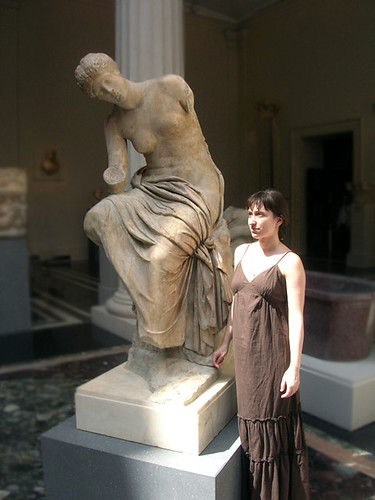
Lisa Stock at MMA April 2009

